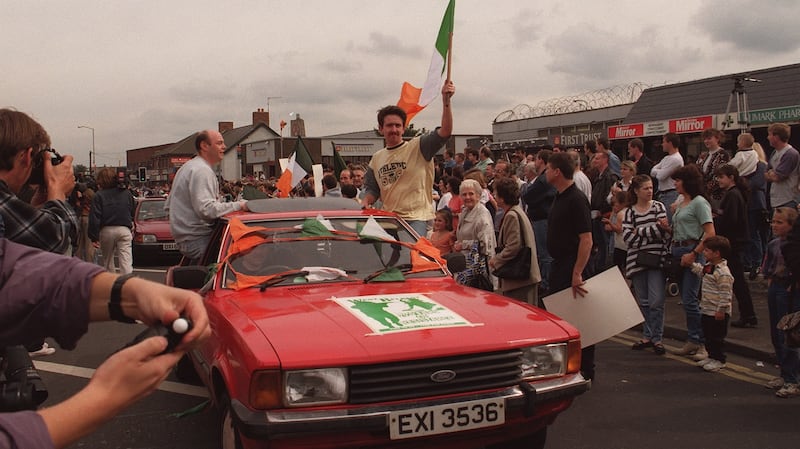UK prime minister John Major remained unconvinced that the IRA had permanently ended its armed campaign following the ceasefire in 1994, according to declassified government documents.
Although there was a wide belief among politicians and the media in the republic that the August ceasefire was the end of military activity by the IRA, Major remained sceptical. In a drafted letter to US president Bill Clinton, Major said it was important to assess whether the ceasefire was permanent.
“I have today reviewed all of the evidence from various sources and judge that we cannot yet determine for sure that the IRA’s campaign is over,” Major said.

The papers have been made available by the National Archives in London, which is moving towards a release of state papers dated after 20 years in contrast with its Dublin counterpart which must adhere to the 30-year rule under Irish law.
The IRA ceasefire came into effect on August 31st, 1994, when the paramilitaries said there would be a “complete cessation of military activities”. It came seven weeks before a ceasefire by loyalists. The IRA resumed activities in February 1996 when a bomb exploded in London’s docklands.
Aftermath
In the months leading up the ceasefire and in the aftermath of the Downing Street Declaration, then taoiseach Albert Reynolds urged caution from the British on how to treat the republicans.
“While the Provisionals are in a corner, from which there is no comfortable escape, it is vital, in my view, for neither government, during their period of considering the declaration, to appear to be bribing or threatening them, or to otherwise humiliate them,” wrote Reynolds in a letter to Major in December 1993.
“If the joint declaration is presented publicly by us at this stage as a defeat for the IRA or as a charter for their surrender, then I greatly fear it will fail in its central purpose. The reality is that, while they have certainly not won, neither have they been militarily defeated, and they retain immense capacity to do continued harm. The only exit from a situation, which is increasingly irksome even to them, therefore has to be, in the spirit of the joint declaration, an honourable one.”
Responding to Reynolds, Major said that violent action after the Christmas ceasefire had been murderous but agreed that neither side should be seen to threaten, bribe or humiliate Sinn Féin. “The restraint of our own reaction has reflected an understanding of the delicate psychology involved in the exercise to which both our governments are committed,” said Major.
After the Loughinisland massacre in July 1994, in which six people were murdered by loyalist paramilitaries, Major wrote to Reynolds. “I find it hard, as you must, to find words to express my revulsion and anger of atrocities such as we saw in Loughinisland on Saturday evening. I draw only one conclusion. We cannot go back,” said the prime minister.
Rift
A rift began to emerge between the British and Irish positions on the ceasefire shortly after it was announced. Major told Reynolds in a letter in September 1994 that he had been caught by surprise at a meeting that the taoiseach had with Gerry Adams and feared it would exacerbate the suspicions of unionists. Reynolds later explained that the meeting had been scheduled for sooner than he had thought.
A subsequent heated phone call between the two leaders heard the taoiseach complain about the tactics of marines in South Armagh while Major was concerned about punishment beatings.
“The two prime ministers, as usual, parted as friends (at least until the taoiseach next finds himself in front of a microphone!),” said a memo of the call.
There was some light relief at the time. Reynolds said that he was aware the security forces were working to reduce tensions and move towards normality because someone had telephoned his office to complain that the RUC were now issuing parking tickets.









